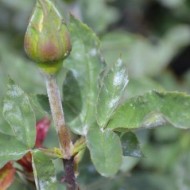Spectacular hybrid tea rose Big Purple in the country: from planting to wintering
Content
- 1 History of creation
- 2 Description and characteristics of the Big Purple rose
- 3 Advantages and disadvantages of the variety
- 4 Video "Review of the Big Pearl hybrid tea rose"
- 5 Rules for planting and caring for the Big Purple rose
- 6 Diseases and pests of the variety
- 7 Tea-hybrid rose Big Purple in landscape design
- 8 Florist reviews
History of creation
Unlike other roses, Big Purple was not bred by a breeder, but by a simple clerk of the New Zealand Rose Community. In 1985, amateur gardener Pat Stevens, who worked as a secretary at the time, introduced to the community a new variety of hybrid tea, called Big Purple. There are other names for the garden culture, including STEbigpu, Stephen's Big Purple and Nuit d'Orient.
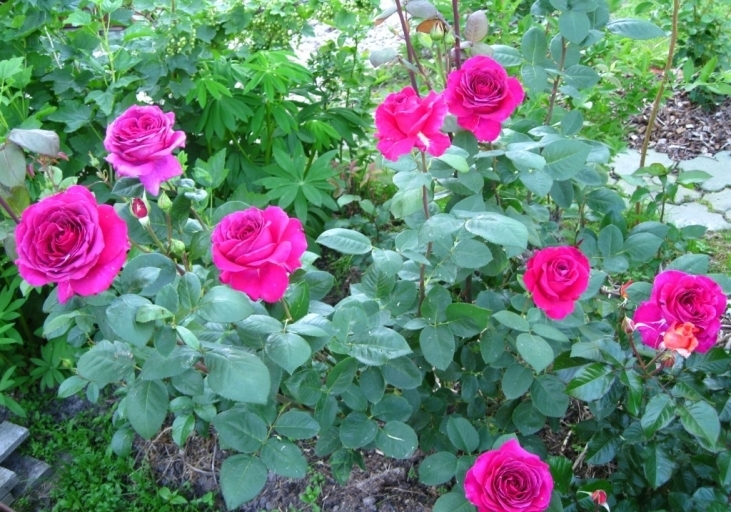
The variety, bred by an amateur, is in no way inferior to the more famous rose bushes. The spectacular appearance and wonderful aroma were appreciated by many gardeners of the world. So, in 1999, at the Rosexpo Montreal Show (Canada), the Big Purple rose was awarded the Best Purple Rose nomination.
Description and characteristics of the Big Purple rose
The rose bush is compact in size: the height of an adult plant reaches 1.75 m, and the width ranges from 0.7 to 1.4 m. The variety is characterized by erect, powerful shoots. The leaves are large, traditional in shape, rich green color with a grayish tint.
One bud is formed on the shoot. Flowers are densely double, large, beautiful cupped shape. One bud contains about 40–45 petals. Big Purple attracts attention with an interesting color of the buds: in one flower, shades of purple, bright purple, pale purple and crimson are harmoniously combined. However, with improper care, as well as under the influence of moisture, the bud loses its shape and juiciness of color.
The Big Purple bloom is undulating. The first buds form and bloom closer to the end of spring. With a favorable microclimate, the plant can bloom until the beginning of autumn. During the flowering period, the rose bush exudes an intense, yet completely unobtrusive fruity aroma.
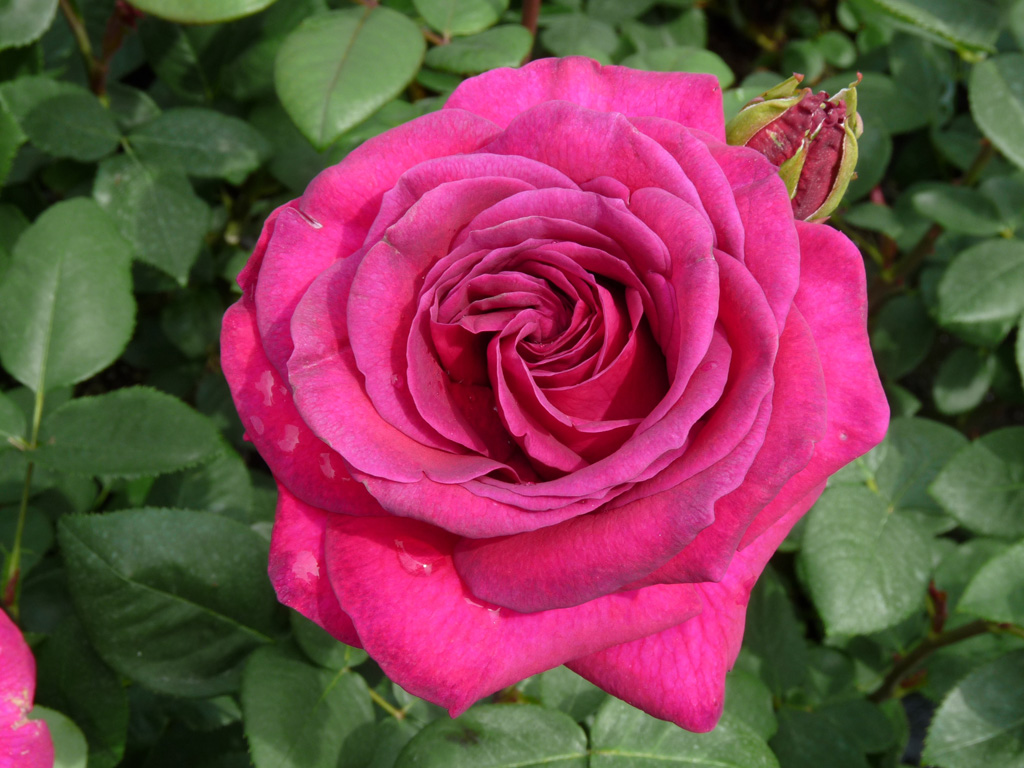
Advantages and disadvantages of the variety
Unfortunately, the Big Purple rose is not perfect. Despite its many advantages, the variety has several disadvantages.
- amazing color and interesting shape of the buds;
- pleasant fruity aroma;
- long flowering period;
- preservation of decorative qualities in cut form;
- low requirements for growing conditions and care;
- good winter hardiness.
- loss of shape and color of buds under the influence of moisture;
- tendency to fade in intense sun;
- a decrease in the number of peduncles as it blooms;
- an average degree of resistance to fungal diseases.
Video "Review of the Big Pearl hybrid tea rose"
This video tells about the main decorative qualities of garden culture.
Rules for planting and caring for the Big Purple rose
The rose is called the most capricious flower.But if you adhere to certain rules of planting and care, then you can grow a good rose garden on the site. Consider the basic rules of Big Purple cultivar farming.
Optimal conditions
The flowering intensity and color saturation of the buds depend on the amount of sunlight received. To plant and grow the Big Purple rose, you need to look out for a site where sunlight prevails in the morning and a light shade in the second. In this case, the area should be well ventilated, but closed from drafts and strong winds.
Rose loves moderately light and fertile soil. The seedling is planted in nutrient-rich loam or black soil. The optimal acidity level is from 5, 6 to 6.5 pH.
The Big Purple variety grows poorly and is often sick in swampy environments. Groundwater should be no higher than 1.5–2 m from the ground surface.
Site preparation and planting of seedlings
Before planting a seedling, you need to increase the fertility of the soil mixture. For example, a clay medium should be diluted with peat, rotted compost and sifted river sand. Peat compost and turf soil can be added to sandy soil. If the acidity of the medium is overestimated, it is recommended to liming the site.
For planting, it is better to take seedlings with a closed root system, which can be bought in horticultural nurseries. At the same time, make sure that the plant does not have mechanical damage, traces of insects and signs of disease.

The rose bush is planted in the spring, closer to mid-April. The root is pre-disinfected with a solution of potassium permanganate and fed with a growth stimulator "Kornevin". A rose is planted in a planting hole, the bottom of which is filled with drainage materials. When rooting, you need to make sure that the root collar is 3-4 cm deep. The plant is sprinkled with the remnants of the nutrient mixture (sod and deciduous soil, peat, humus), carefully tamped and moistened abundantly.
Reproduction of culture
To preserve the decorative and varietal qualities, the Big Purple rose is propagated by cuttings. Cuttings are cut after the first flowering of the shrub. A stalk 15–20 cm long should have several healthy buds.
The cutting rooted in fertile soil is covered with a glass cover and moved to a warm and well-lit place. Periodically, the plant is ventilated and irrigated from a spray bottle. The planting of a mature cuttings in open ground is performed next spring, when at least 3 fully formed and healthy leaves appear on the plant.
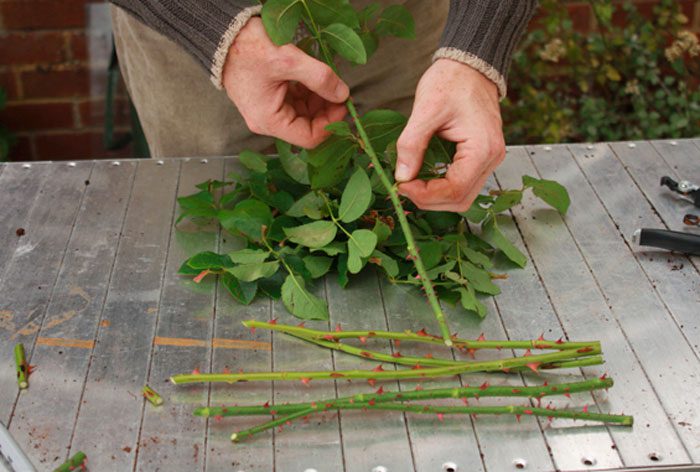
Care features
Big Purple is characterized by increased drought resistance. But the lack of moisture in the soil leads to a deterioration in budding and loss of decorative qualities. Therefore, the rose bush is watered at least 2 times a week. One bush takes 15–20 liters of water.
Experienced gardeners recommend to mulch the bush with hay, straw or peat. A layer of mulch prevents weeds from growing and helps maintain an optimal water balance in the soil.
Few novice growers know that in the first year after planting in a permanent place of growth on a rose bush, you need to pick off the buds. Otherwise, a young plant that has spent all its energy on flowering may not survive the cold season.
An ornamental shrub must be covered for the winter. In the southern regions, a plentiful layer of mulch is sufficient for the root zone. In the central and northern regions, the rose is insulated more thoroughly: the root part is mulched well, the shoots are covered with pine spruce branches.
Diseases and pests of the variety
The Big Purple variety is rarely affected by insects.Dangerous pests include caterpillars and slugs, which only manual sampling will help to get rid of. For this reason, we recommend that you do not forget to periodically inspect the bush for the presence of uninvited guests.
As for the diseases typical of roses, Big Purple has good resistance to most diseases of a fungal and bacterial nature. Exceptions are black spot and powdery mildew:
- Powdery mildew is a white powdery coating on leaves, shoots and even buds. Occurs in conditions of lack of sunlight and abundant thickening of the rose bush. You can treat the plant using folk methods, among which the most effective are a decoction of horsetail (100 g of raw materials per 1 liter of water) and a mustard solution (2 tablespoons of mustard per 10 liters of water). For more operative treatment, the drugs "Tiovit Jet", "Baktofit", "Baylon" are used.
- Black spot appears as round black and brown spots. It affects leaves, young shoots, lignified branches and sepals. It is necessary to fight the pathology with copper-containing and systemic fungicides "Abiga-Peak", "Skor", "Topaz", "Previkur Energy".
- The manifestation of powdery mildew
- Signs of black spot
- Caterpillar defeat of a rose bush
Tea-hybrid rose Big Purple in landscape design
The Big Purple hybrid tea rose has a wide range of uses. Bright buds are often used to compose a variety of floristic compositions. It should be noted that the cut flower retains its original shape and color for a long time.
Flowering ornamental shrub is actively used in landscape design. Due to the weak foliage of the lower part of the shoots, the bush is rarely planted solitary. Most often, Big Purple acts as an element of a compositional or group landing. Looks interesting together with conifers and cereals. Can also be combined with other decorative flowering plants. It is advisable to choose plants with a contrasting color of buds.
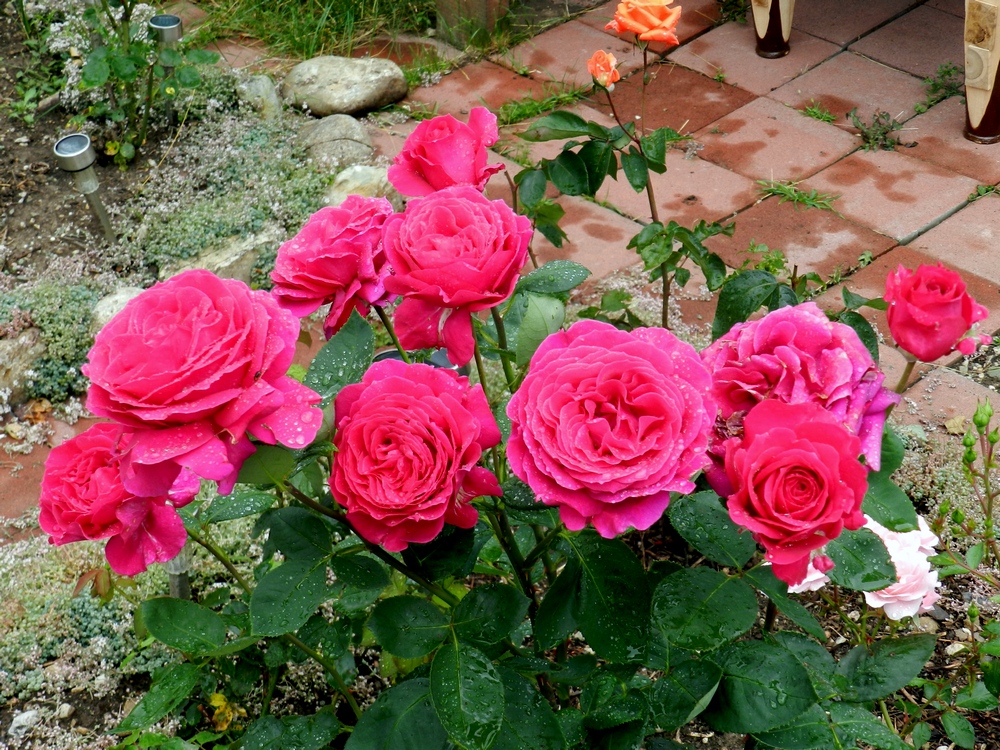
Florist reviews
“A couple of years ago, I planted a small bush of the Big Purple hybrid tea rose in my country house. The seedling quickly adapted and took root, grows well and pleases with rich flowering. "
“I have been dealing with roses for many years. Among the favorites is the Big Purple variety, which attracts attention with its beautiful shape and unusual color of the buds. I would also like to note the medium size of the rose bush and the exquisite aroma of flowers. "
According to gardeners, the Big Purple rose belongs to the unpretentious varieties in cultivation. The plant can be cultivated in different climatic zones. The main thing is to follow the rules of agricultural technology and take into account the peculiarities of the region.

